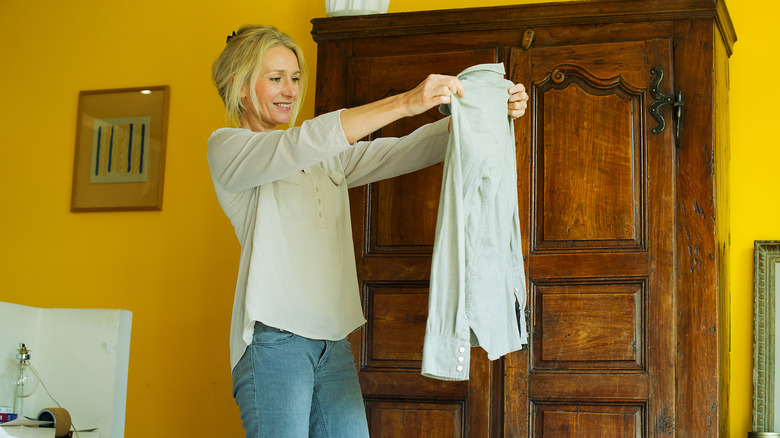You're Getting Marie Kondo's Decluttering Rule Wrong (& Here's Why It Really Works)
Back in 2014, Marie Kondo famously laid out her method for decluttering your home in her #1 New York Times Best-Seller "The Life-Changing Magic of Tidying Up." Two Netflix shows and a handful of books later, and there aren't many people left who haven't tried her KonMari Method and loved it ... or failed at it, criticized it, and written it off.
For those who've had trouble implementing her approach, the usual snag is that they get caught up on the "spark joy" part, which requires holding each item in your hands and asking yourself whether it sparks joy. If the item doesn't bring you joy, you discard it. Some people get confused with the principle of the "spark joy" method. After all, it doesn't seem to leave room for practical items like toilet brushes or toasters.
Here's the problem with that: You're not supposed to take it so literally. Instead, the idea is that you want to focus specifically on what adds value to your home or life. The catchy phrase is the most memorable step in her process, for sure, and has taken on a life of its own in popular culture. What's also usually left out of this discussion, though, is that this is only the final step in a 6-step process, and skipping to the end can lead to poor results. Fans of her show "Tidying Up with Marie Kondo," have seen homes go from horribly cluttered to beautifully organized in a 40-minute episode, but the KonMari Method is not a one-time "before and after" event. It is an entire lifestyle change that requires regular maintenance.
How to correctly declutter with the spark joy approach
To organize like Marie Kondo in the long-term, you need to follow all of her steps — in the correct order. The first two steps ("Commit Yourself to Tidying Up" and "Imagine Your Ideal Lifestyle") are entirely mental, but important for getting into the right mindset before you begin. Next comes the decluttering, but there are four rules you must follow. Let's break them down.
"Finish Discarding First" means to discard completely before cleaning and organizing. You won't know how much space you need to put things away until you are done discarding. The next rule is to "Tidy by Category, not by Location." Kondo's categories for decluttering are: clothes, books, papers, miscellaneous, and sentimental. You may have books in every room of your home, and Kondo wants you to see all of them at once. Stick with one category until it is done, and "Follow the Right Order" (as listed above), which is the next rule. Clothes are one of the easiest items for most people to declutter, since clothing trends constantly change. Starting with the easiest category will get you used to letting things go and prepare you for the last (and hardest) category of sentimental items.
Now we come to the final rule that people so often misunderstand: "Ask Yourself if it Sparks Joy." It's important to know not only "if" something sparks joy, but also "why." Knowing why something doesn't spark joy could help you see patterns that make the decluttering process quicker, and stop you from buying those items in the future.
Why the KonMari Method works
Marie Kondo's method for tidying up works because it's not just about stuff, it's a lifestyle choice that can bring about permanent changes. Instead of jumping in to organizing, you are forced to get into the right headspace and visualize what you want. Let's say you have a covered back porch that has become a dumping ground for storage boxes. By visualizing what you really want from that space (sipping wine with your partner on a porch swing), will give you something worth aiming for, and make it easier to discard unnecessary items to make it a reality.
Another reason it works is that the "spark joy" method is not a one-size-fits-all approach. There is no rule to how much you are allowed to keep — a bookworm will keep more books, while a clotheshorse will keep more clothes. While some think KonMari is a strict method that strives for minimalism, it is really about surrounding yourself with things you love, instead of stressful clutter.
And nothing is black and white, here. After three children, for instance, even Marie Kondo admits that it's okay to not always have a tidy home. As Kondo explained at a media webinar, per The Washington Post: "Now I realize what is important to me is enjoying spending time with my children at home [...] Tidying our homes, tidying our environment is also a way of tidying our minds." And that is truly what makes her method a success.


